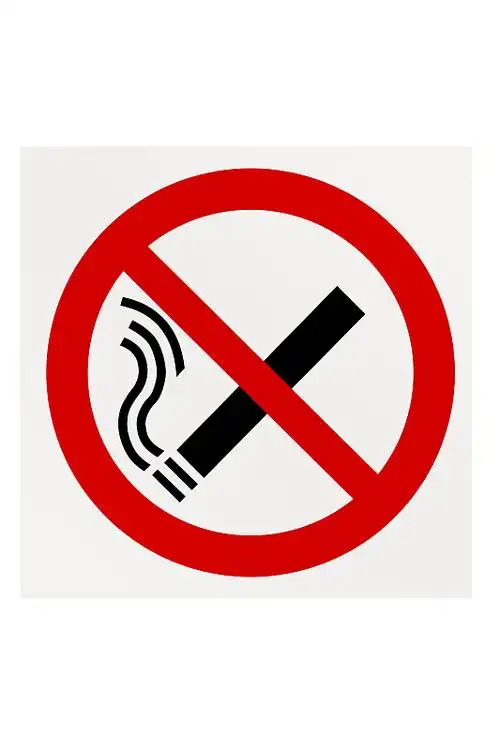The Hidden Cost: How Smoking Undermines Surgical Recovery and Wound Healing

We all know that preparing for surgery involves a series of important steps. You might be focused on the procedure itself, the skill of your surgeon, or the advanced technology at the hospital. But there's a powerful factor that lies entirely in your hands, one that dramatically influences your journey back to health: whether or not you smoke.
The link between smoking and poor health outcomes is well-established, but its specific, profound impact on the body's ability to heal after an operation is a story that deserves a closer look. The central, undeniable truth is that smoking actively reduces the rate of excellent and good postoperative wound healing. This isn't just a minor complication; it's a fundamental disruption of your body's natural repair mechanisms, turning a straightforward recovery into a potentially challenging ordeal.
To understand why, we need to dive into the biology of healing and see how smoking throws a wrench into the works.
The Symphony of Healing and How Smoking Creates Dissonance
Imagine your body's healing process as a beautifully orchestrated symphony. When a surgical incision is made, the body immediately launches a complex, coordinated response. This process unfolds in three main, overlapping phases:
- The Inflammatory Phase: This is the immediate response. Blood vessels constrict to minimize bleeding, and then platelets form a clot. Soon after, the area is flooded with inflammatory cells that act as the cleanup crew, removing bacteria and dead tissue. This controlled inflammation is crucial for setting the stage for repair.
- The Proliferative Phase: Here, the construction begins. Cells called fibroblasts rush in, producing collagen—the protein that acts as the scaffolding for new tissue. New blood vessels, a process called angiogenesis, begin to sprout, delivering essential oxygen and nutrients to the hungry, healing wound. The wound begins to fill in and contract.
- The Remodeling Phase: This final phase can last for months or even years. The initially disorganized collagen fibers are restructured and cross-linked, strengthening the scar tissue and making it more resilient.
Now, let's introduce cigarette smoke into this symphony. It's like a conductor who has lost the score, causing every section of the orchestra to play out of tune. The primary culprits in smoke that sabotage this process are nicotine, carbon monoxide, and hydrogen cyanide.
-
Nicotine's Constricting Grip: Nicotine causes blood vessels throughout the body to constrict (vasoconstriction). For a healing wound, this is catastrophic. Reduced blood flow means less oxygen and fewer nutrients reach the site. Think of the construction workers (fibroblasts and immune cells) showing up to a job site without any building materials or power. The delivery of vital oxygen and nutrients for wound repair is severely compromised, slowing the entire process to a crawl.
-
Carbon Monoxide's Oxygen Theft: Hemoglobin in your red blood cells is designed to carry life-giving oxygen. Carbon monoxide, however, binds to hemoglobin over 200 times more tightly than oxygen does. This creates a condition called tissue hypoxia, where the tissues are starved of oxygen. Without sufficient oxygen, cells cannot produce the energy needed for division, migration, and collagen synthesis. The foundation of the new tissue becomes weak and unstable.
-
The Direct Cellular Attack: Hydrogen cyanide and thousands of other chemicals in smoke directly impair the function of crucial cells. They damage the fibroblasts, reducing their ability to produce strong collagen. They also weaken the immune cells, making the wound far more susceptible to surgical site infections. A compromised immune system and poor blood flow create a perfect storm for bacteria to thrive.
From Theory to Reality: The Clinical Consequences of Impaired Healing
So, what does this biological sabotage look like in real life? When the rate of excellent and good wound healing is reduced, patients face a higher risk of a range of complications that can prolong recovery, increase discomfort, and lead to further medical interventions.
- Dehiscence: This is the partial or complete separation of the layers of a surgical wound. It's a serious complication often linked to poor collagen formation and infection, both of which are exacerbated by smoking.
- Surgical Site Infections (SSIs): With a weakened local immune response and reduced blood flow, the body struggles to fight off bacteria. These infections can be superficial or deep, sometimes requiring additional surgery, long courses of antibiotics, and extended hospital stays.
- Necrosis and Skin Graft Failure: In severe cases, the lack of blood flow can cause the death of skin and tissue around the wound (necrosis). For patients undergoing procedures like skin grafts or flap reconstructions (common in plastic or reconstructive surgery), smoking significantly increases the risk of graft failure, as the new tissue simply cannot establish a blood supply.
- Poor Cosmetic Outcomes: Even if a wound eventually closes without a major infection, the healing is often of inferior quality. The scar may be wider, more raised (hypertrophic or keloid), discolored, and weaker. The goal of achieving an optimal functional and cosmetic result after surgery is directly undermined.
The Power of Preoperative Cessation: It's Never Too Late to Make a Difference
The news is not all grim. The human body possesses a remarkable capacity for recovery, and this extends to reversing some of the damage caused by smoking. The single most effective thing a smoker can do to improve their surgical outcome is to quit.
The question is, for how long? Research consistently shows that the benefits of smoking cessation before surgery are both significant and time-sensitive.
- Even 24-48 Hours: Quitting even a day or two before surgery can help clear carbon monoxide from the bloodstream, improving oxygen delivery.
- The 4-6 Week Sweet Spot: This is the golden window. Stopping smoking for at least four to six weeks before an operation allows the cilia in the lungs to begin recovering, reduces overall phlegm, and, most importantly, significantly improves blood flow and immune function. This period dramatically lowers the risk of respiratory complications and gives your body's wound healing capacity a major boost.
- Long-Term Cessation: Patients who have quit for more than six months to a year can often see their risk of wound healing complications approach that of a non-smoker.
This proactive step of preoperative smoking cessation is a powerful strategy for improving surgical success. It's a direct investment in your own recovery, reducing the likelihood of a prolonged hospital stay and the need for revision procedures.
A Holistic View: Beyond the Physical Incision
It's also important to consider that the negative impact of smoking on postoperative recovery isn't confined to the visible wound. Smoking affects the entire system. It increases the risk of pneumonia and other respiratory complications after anesthesia, puts extra strain on the cardiovascular system, and can interfere with the metabolism of certain anesthetic drugs and pain medications.
Therefore, the goal of achieving an excellent or good postoperative outcome is a holistic one. It encompasses everything from how cleanly your incision closes to how well your lungs function, how quickly you can return to normal activities, and your overall satisfaction with the surgical experience. By choosing to quit, you are empowering every part of your body to contribute to a smoother, faster, and safer recovery.
In conclusion, the evidence is clear and compelling. Smoking is a primary antagonist in the story of surgical healing. It directly and aggressively reduces the likelihood of an excellent or good outcome by starving tissues of oxygen, hampering the immune response, and weakening the very building blocks of new tissue. However, by understanding this connection and taking the brave, proactive step of smoking cessation—ideally for several weeks before your procedure—you can reclaim control. You can silence the dissonance and allow your body's innate healing symphony to play as it was meant to, guiding you confidently toward a full and successful recovery. Your surgeon provides the skill, but you provide the foundation for healing. Make it a strong one.










